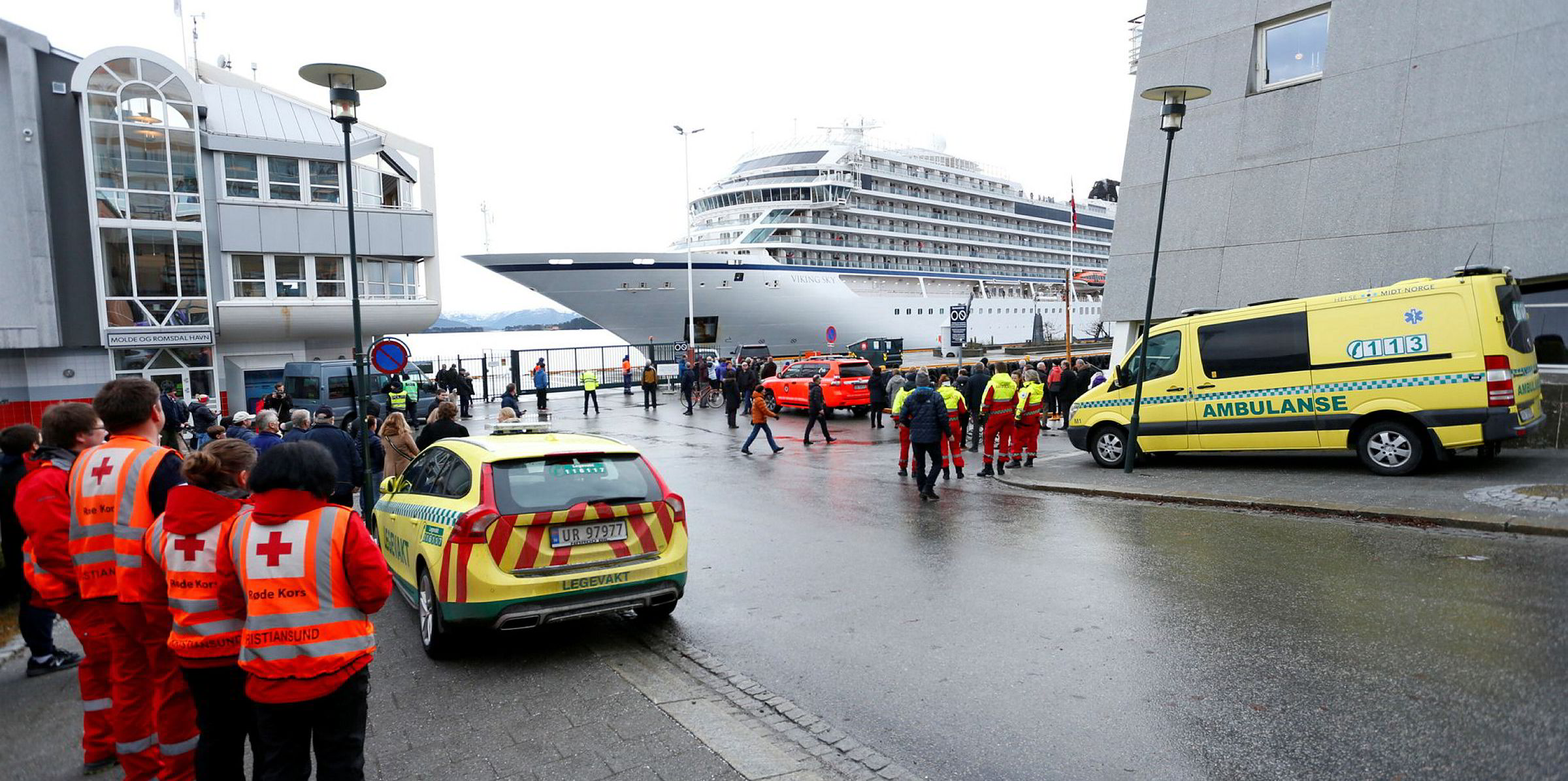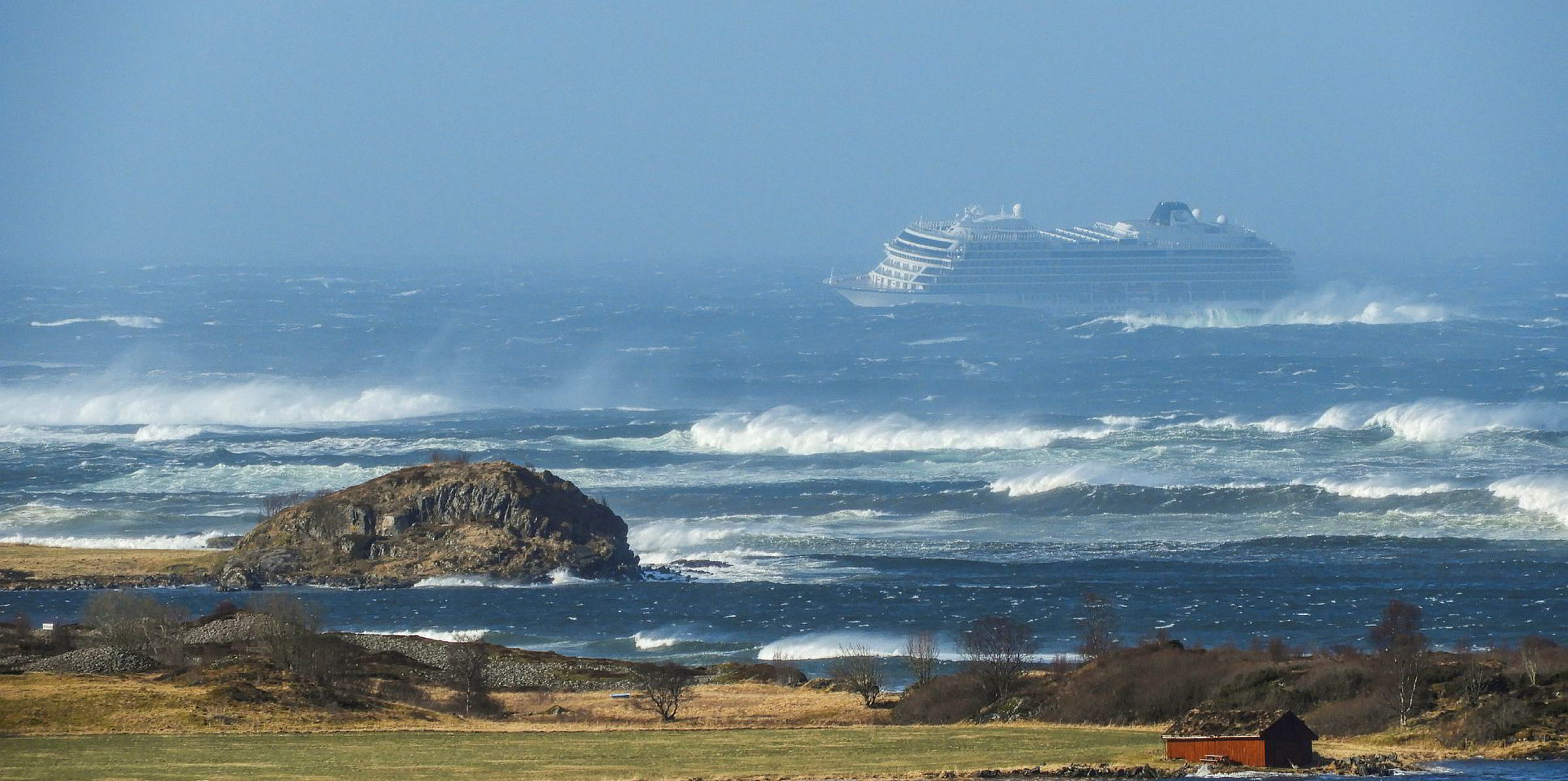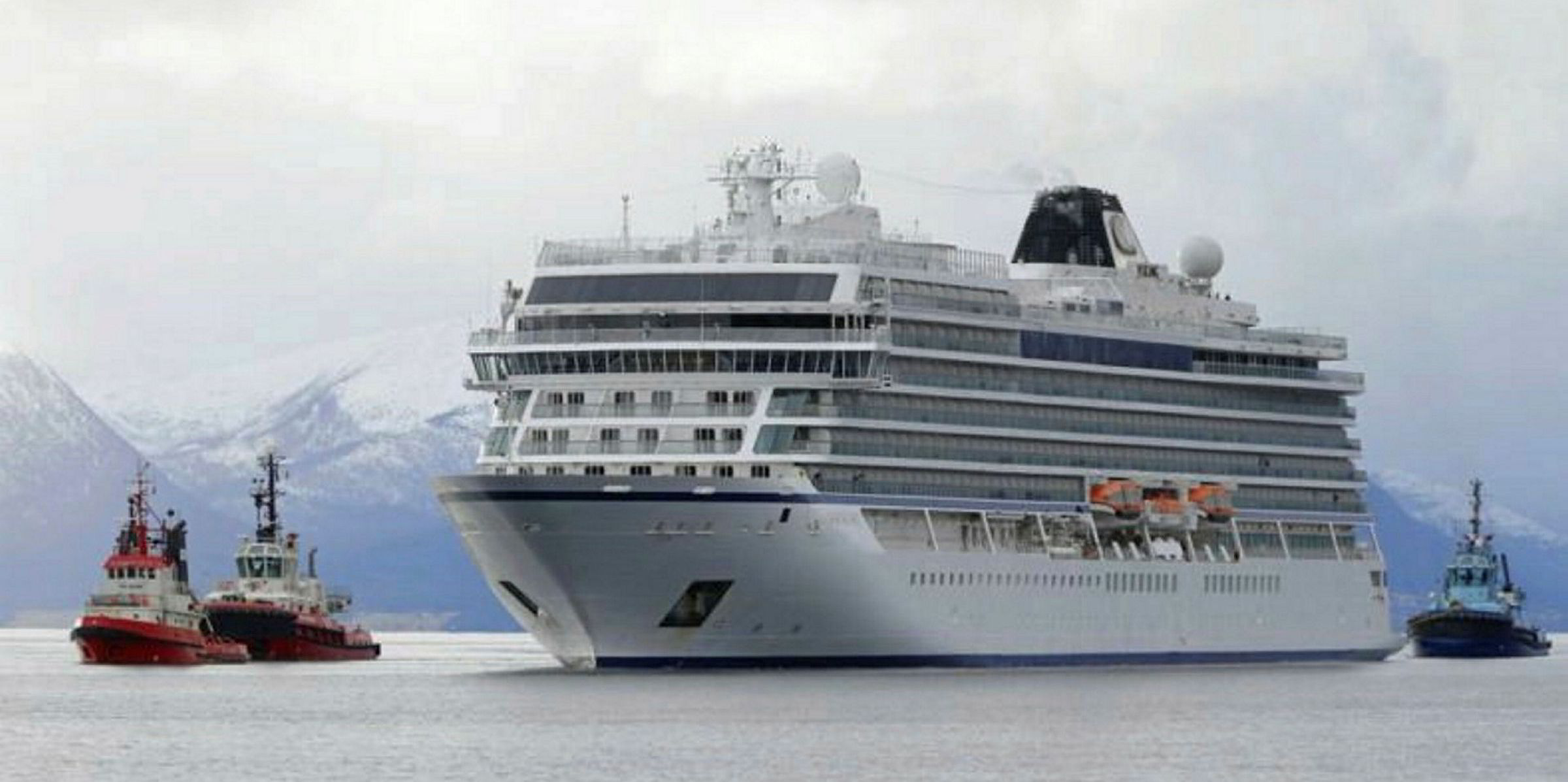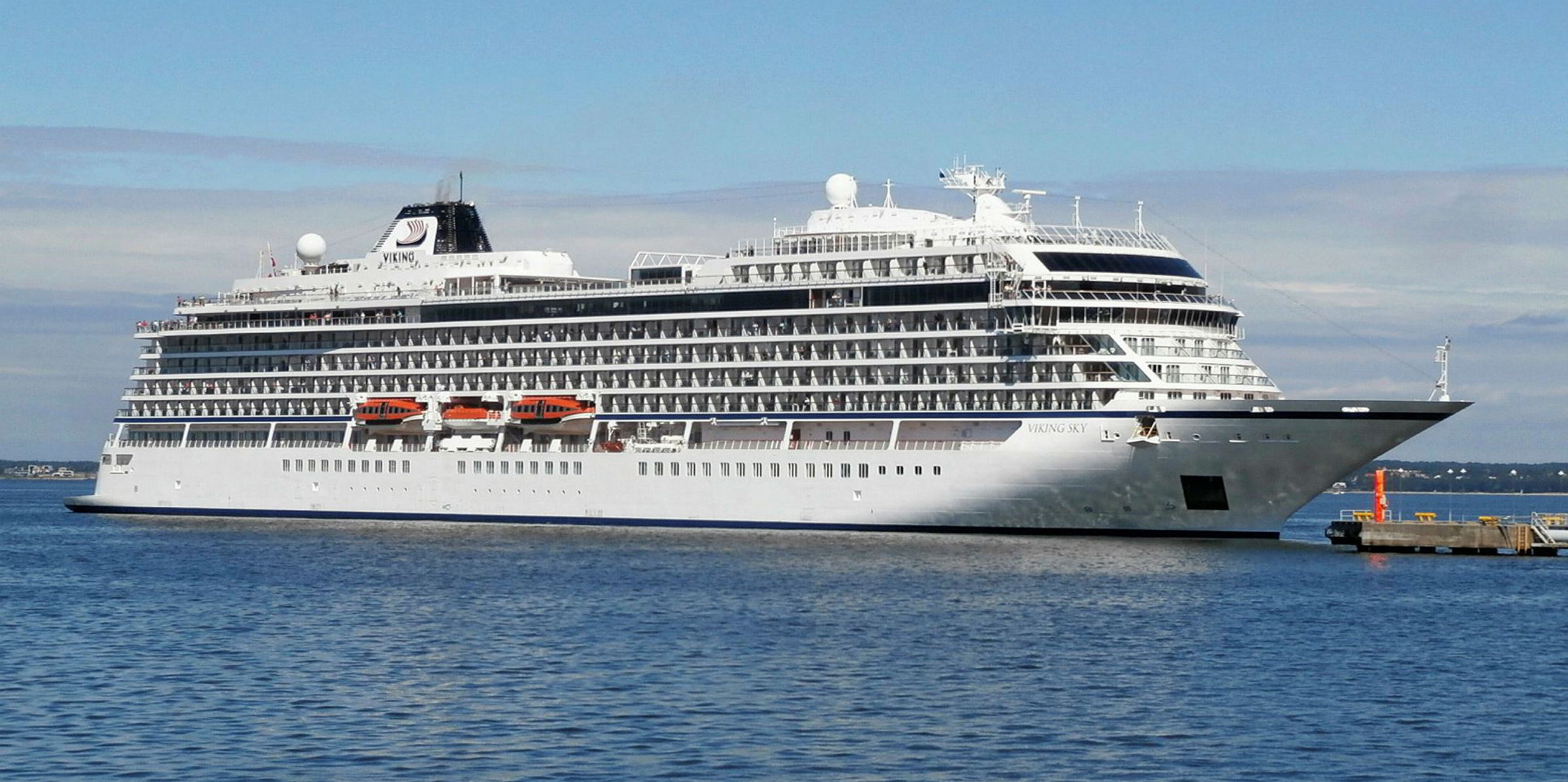The dramatic air evacuation of the cruiseship Viking Sky, which was caught in a storm without power off Norway putting 1,300 lives at risk, will raise serious questions over the adequacy of industry safety regulations.
Under the IMO’s Safe Return to Port regulation, passengerships built after 2010 should be designed to recover power and steering to return to port within an hour of a casualty.
The 48,000-gt Viking Sky (built 2017), which suffered a power loss in all four of its engines, should have been built with redundancy and protection of critical machinery in place, which would have prevented the ship from being disabled by a single point of failure.
But the initial findings of a Norwegian Maritime Authority (NMA) investigation into the incident suggested the ship was sailing in conditions for which it was not designed.
“The heavy seas in Hustadvika probably caused movements in the tanks so large that the supply to the lubricating oil pumps stopped,” the NMA said. “This triggered an alarm indicating a low level of lubrication oil, which in turn shortly thereafter caused an automatic shutdown of the engines.”
A principle of the regulation is that the ship is the best lifeboat and as such the vessel should have been able to take passengers to the nearest port.
Drifting dangerously
It appears the master's decision to anchor the vessel after it had drifted dangerously close to the shore allowed time for one of the engines to recover power and for 500 passengers to be airlifted to safety.
The vessel managed to sail away from shore on Saturday evening with the assistance of tugs.
The 500-gt Vivax (built 2008) was the first tug at the scene, according to its owner Ostensjo Rederi, by which time the cruiseship had started to recover power.
“The cruiseship had its anchor out and one engine running when agreeing with the master pilot to stand down and just stay in the area as a safety [precaution] until the weather calmed," Ostensjo said.
Experts point out that the Safe Return to Port regulation is mainly aimed at recovering power and control after a grounding, collision or fire situation.
It does not take account of the chronic power outage that seems to have struck the Viking Sky.
The cruiseship had its anchor out and one engine running when agreeing with the master pilot to stand down and just stay in the area as a safety [precaution] until the weather calmed
Ostensjo Rederi
The Accident Investigation Board Norway (AIBN) probe — now assisted by UK and US accident investigators — will not only focus on why the engines failed in the first place but also on why the Viking Sky was unable to recover more power more quickly, and if there is a design fault with its power systems.
Unanswered questions
But there are also major questions hanging over Viking Cruises' decision to sail into the storm.
The vessel has been under the technical management of Wilhelmsen Ship Management since delivery. The manager will have been responsible for the appointment of the ship’s officers and crew as well as the daily technical operation.
The company declined to comment until its own internal investigation is complete.
The final decision to sail rests with the ship’s master, who will have had plenty of notification of the severity of the weather and weather routing advice in advance.
The Hustadvika region, where the ship foundered, is known for its rough sea conditions.
Much has been made of a decision made by compatriot passengership operator Hurtigruten to wait rather than sail into the same storm.
Pressure point
The AIBN probe is also likely to look into whether the Viking Sky’s master was put under pressure to sail by operator Viking Cruises.
TradeWinds' sister paper, Dagens Naeringsliv, has raised a question over whether the ship was under pressure to sail to make sure it made it to the UK on time for a lucrative trip to the Norwegian coast to see the Northern Lights?






